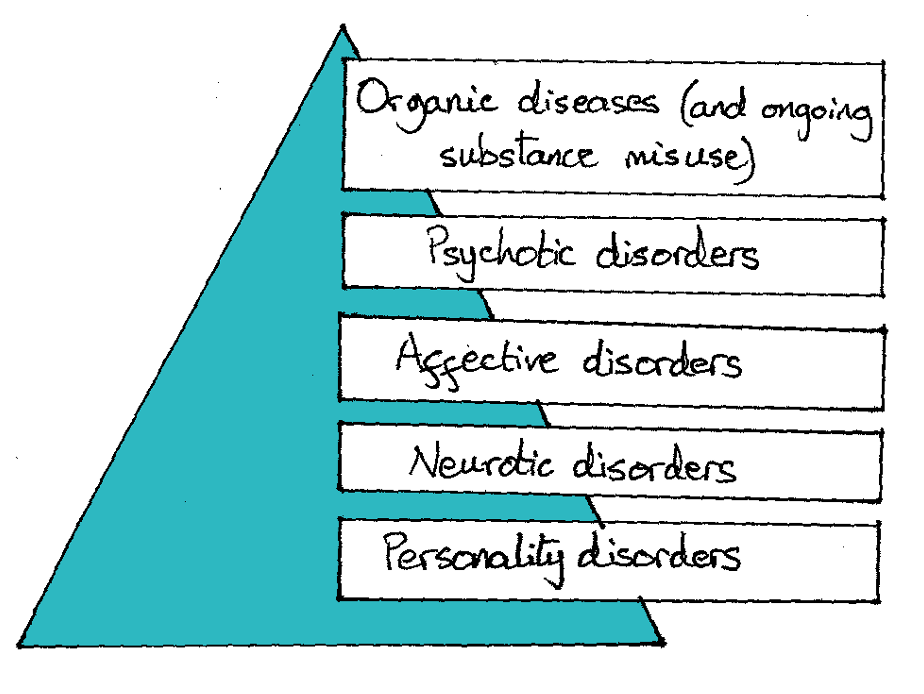Disease = the objective physical pathology and known aetiology
Illness = the patient’s subjective distress caused by a condition
A big problem in psychiatry is that many conditions have no known or understood pathophysiological cause.
– This makes it very difficult to diagnose diseases, since there is no demonstrable pathology.
– Therefore, psychiatry talks about mental illness – this is a level of subjective distress which is greater in severity or duration than occurs in normal human experience
– This allows us to diagnose patients regardless of our understanding of the condition and provide treatment
A diagnosis is the art of identifying a disease from its signs and symptoms. It is important as it has 4 elements:
– Descriptive –> this gives information about the type of symptoms a condition is associated with
– Aetiological –> A diagnosis often has a specific cause
– Therapeutic –> By giving a diagnosis, it paves the way for a standardised treatment plan
– Prognostic –> After a diagnosis is made, we can estimate the outlook for the patient based on cases before.
A classification system is a way of grouping together patients who are similar in their clinical features:
– It provides a common language for communication between patients, professionals and researchers
– Improves reliability –> This is reproducibility among different settings
– Improves validity –> This refers to the correctness of diagnoses (does it reflect the real world)
There are two main classification systems used today which are share many similar features.
– These systems are categorical systems and the diagnosis is based on symptoms not aetiology or typology.
Classification Systems
i) International Classification of Diseases (ICD)
This is made by the WHO and has now released ICD-11
This is organised in a hierarchy from organic diseases to personality disorders.
– This hierarchy means that if a person with dementia is also anxious, the anxiety would be classified as a neuropsychiatric problem of the dementia rather than separately diagnosed as anxiety disorder.
– Also, a person meeting criterion for both depression and anxiety would be diagnosed with depression alone.
– Comorbidity is only allowed if a person is experiencing symptoms not explained by one diagnosis alone e.g. depression + personality disorder

ii) Diagnostic and Statistical Manual of Mental Disorders
This was devised by the American Psychiatric Association
– The DSM-IV used to use a multi-axial system, where each psychiatric diagnosis could be organised into 5 dimensions, each providing more information about the patient:
– This was subsequently removed by the DSM-5. This system combines former axes 1,2 and 3 and includes separate notations for recording information that would be in Axes 4 and 5.
| Axis 1 | Clinical Syndromes | Includes all mental disorders and criteria for rating them except personality disorders/LD and abuse/neglect |
| Axis 2 | Personality disorders and learning disability | Reserved for personality disorders and learning disabilities |
| Axis 3 | General Medical Conditions | These are any medical conditions that could affect a patient’s mental state |
| Axis 4 | Psychosocial and environmental problems | These are stressful life events that have occurred within the previous year |
| Axis 5 | Global Assessment Functioning | This is how well the patient performed during the previous year |
Whilst the classification systems are very popular, they also have several problems:
– Similar Diagnoses –> Large overlap between conditions
– Very slow to respond to changing knowledge
– There is a danger of over-diagnosing patients with newer conditions.

